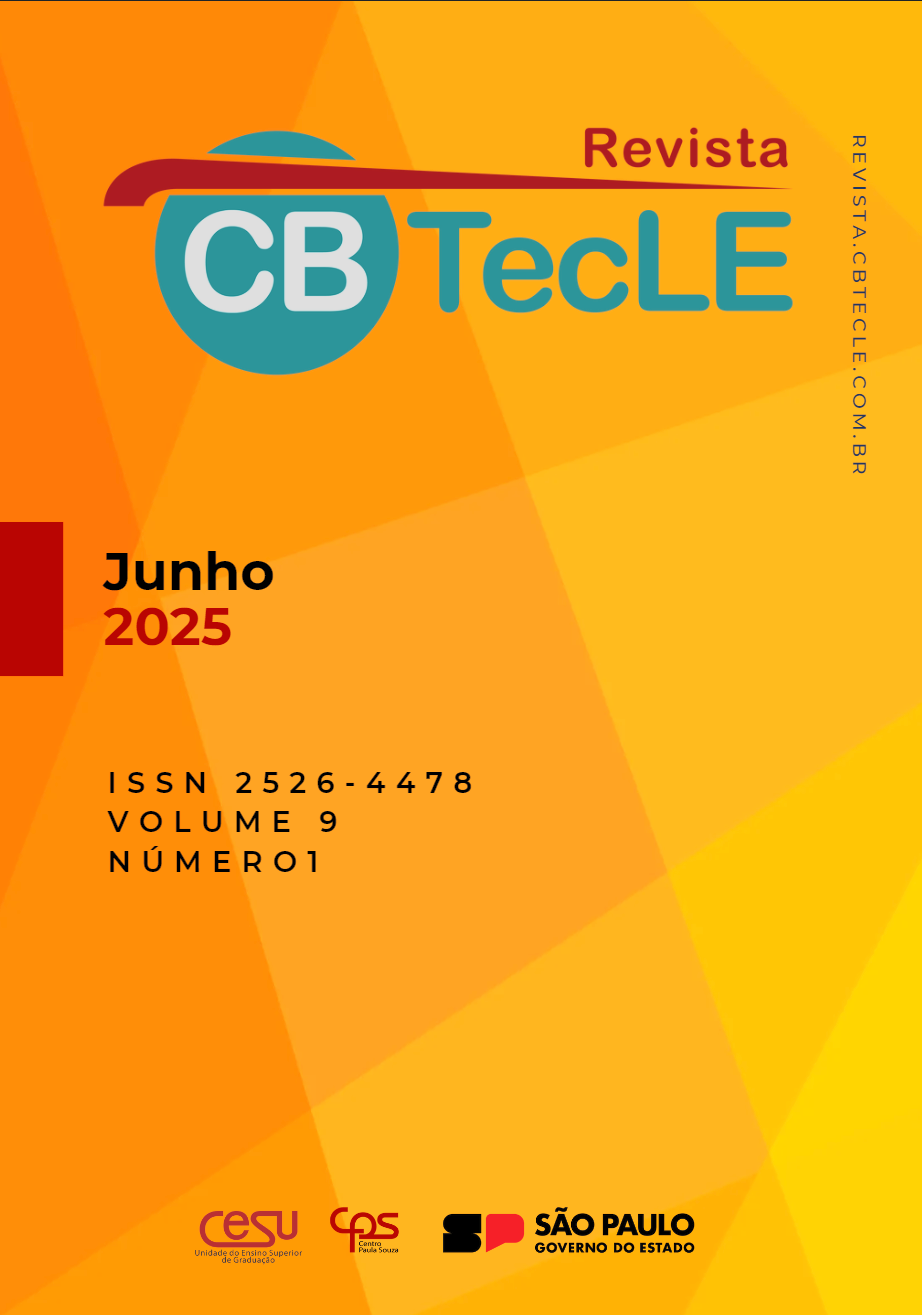TEACHING AND LEARNING OF SIGN LANGUAGES
Keywords:
Deaf education, Sign language teaching, Digital technologies, Active methodologiesAbstract
This article analyzes the teaching-learning of sign language through bibliographic research and the experience of this researcher. Going through the evolution of the education of the deaf and Libras and the teaching methods used, it was possible to perceive how much Libras has strengthened and valued itself as the official language of the deaf community. In the light of the studies of the parameters of Libras and the classifiers of Felipe and Monteiro (2006) and the playful activities of Quadros and Cruz (2009), the teacher develops the pedagogical work for the acquisition of a new language, in a more interactive and meaningful perspective, respecting the visual and spatial nature of the deaf to communication and social interaction. since they perceive and see the world through visual experiences. Based on Cerigatto and Machado (2018), the digital technologies, tools and resources used in electronic media, and the active methodologies, teaching strategies, which place students as protagonists of their learning, allow the teacher, mediator and guide in this process, to promote an interactive and practical teaching of Libras to listeners and deaf people, respecting the visual and spatial nature of the mother tongue belonging to the Brazilian deaf community.
Keywords: Teaching of libras; Digital technologies; Active methodologies.
References
ARAÚJO, Hélio Fonseca de; PEREIRA, Regiane Cunha. Libras: contexto escolar. [S. l.: s. n.], 2016. Disponível em: https://pep.ifsp.edu.br/images/PDF/CSP/documentos-sociopedagogicos/Palavras-para-o-Contexto-Escolar.pdf. Acesso em: 03 abr. 2025.
BRASIL. Lei nº 10.436, de 24 de abril de 2002. Dispõe sobre a Língua Brasileira de Sinais - Libras e dá outras providências. Disponível em: http://www.planalto.gov.br/ccivil_03/leis/2002/l10436.htm. Acesso em: 03 abr. 2025.
BRASIL. Decreto nº 5.626, de 22 de dezembro de 2005. Regulamenta a Lei nº 10.436, de 24 de abril de 2002, que dispõe sobre a Língua Brasileira de Sinais – Libras, e o art. 18 da Lei nº 10.098, de 19 de dezembro de 2000. Disponível em: https://www.planalto.gov.br/ccivil_03/_ato2004-2006/2005/decreto/d5626.htm. Acesso em: 03 abr. 2025.
CERIGATTO, Pícaro M.; MACHADO, Guidotti V. Tecnologias digitais na prática pedagógica. Porto Alegre: SAGAH, 2018. E-book. Disponível em: https://integrada.minhabiblioteca.com.br/reader/books/9788595028128/. Acesso em: 03 abr. 2025.
COELHO, Luana; PISONI, Silene. Vygotsky: sua teoria e a influência na educação. Revista e-Ped-FACOS/CNEC, Osório, v. 2, n. 1, ago. 2012. Disponível em: http://facos.edu.br/publicacoes/revistas/e-ped/agosto_2012/pdf/vygotsky_-_sua_teoria_e_a_influencia_na_educacao.pdf. Acesso em: 04 abr. 2023.
CORRÊA, Ygor; CRUZ, Carina R. Língua brasileira de sinais e tecnologias digitais. Porto Alegre: Penso, 2019. E-book. Disponível em: https://integrada.minhabiblioteca.com.br/reader/books/9788584291687/. Acesso em: 28 mar. 2025.
DONATO, Adriana Di; HOLLOSI, Márcio; CAMPOS, Sandra. Libras como língua adicional para estudantes universitários ouvintes. In: BEGROW, Desirée De V.; MOURA, Cecilia. Libras e surdos: políticas, linguagem e inclusão. São Paulo: Contexto, 2024. E-book. p. 69-80. Disponível em: https://integrada.minhabiblioteca.com.br/reader/books/9786555413953/. Acesso em: 28 mar. 2025.
FELIPE, Tanya A.; MONTEIRO, Myrna S. Libras em Contexto: Curso Básico: Livro do Professor. 6. ed. Brasília: Ministério da Educação, Secretaria de Educação Especial, 2006. Disponível em: https://repositorio.faculdadefama.edu.br/xmlui/handle/123456789/13. Acesso em: 02 abr. 2025.
GESSER, Audrei. Libras? Que língua é essa?: crenças e preconceitos em torno da língua de sinais e da realidade surda. São Paulo: Parábola Editorial, 2009.
MORAIS, Carlos E. L. et al. Libras. 2. ed. Porto Alegre: SAGAH, 2019. E-book. Disponível em: https://integrada.minhabiblioteca.com.br/reader/books/9788595027305/. Acesso em: 28 mar. 2025.
MORAN, José. Metodologias ativas para uma aprendizagem mais profunda. In: BACICH, Lilian; MORAN, José. (orgs.). Metodologias ativas para uma educação inovadora: uma abordagem teórico-prática. Porto Alegre: Penso, 2018. p. 2-25.
PEREIRA, Maria Cristina da Cunha (org.). Libras: conhecimento além dos sinais. 1. ed. São Paulo: Pearson Prentice Hall, 2011.
QUADROS, Ronice Müller de; KARNOPP, Lodenir Becker. Língua de sinais brasileira: estudos linguísticos. Porto Alegre: Artmed, 2004.
QUADROS, Ronice M.; CRUZ, Carina R. Língua de sinais: instrumentos de avaliação. Porto Alegre: ArtMed, 2009. E-book. Disponível em: https://integrada.minhabiblioteca.com.br/reader/books/9788536325200/. Acesso em: 28 mar. 2025.
SKLIAR, Carlos (org.). A surdez: um olhar sobre as diferenças. Porto Alegre: Mediação, 1998.
SOARES, M. A. L. A educação de surdos no Brasil. Campinas: Autores Associados, 1999.
TURETTA, Beatriz A. dos Reis; LACERDA, Cristina B. F. de. Língua de sinais como língua das comunidades surdas. In: LACERDA, Cristina B. F. de; SANTOS, Lara Ferreira dos; MARTINS, Vanessa R. O. (orgs.). Libras: aspectos fundamentais. Curitiba: InterSaberes, 2019. [livro eletrônico]. p. 21-41. Disponível em: https://plataforma.bvirtual.com.br/Leitor/Publicacao/169745/pdf/203?code=QCbIP/3sifbhJJ0WpRMMW/FUU2prWwIponxEFL3E/heC6yyAhBx7NjvPU5Q1NczXPMmxkZwcESvJ/QFaYxh6pg==. Acesso em: 28 mar. 2025.
ULBRA (org.). Libras. Canoas: ULBRA, Universidade Luterana do Brasil, 2006.



